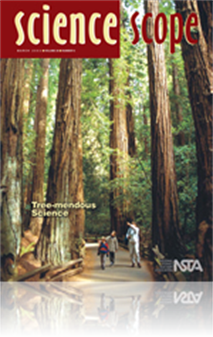All Resources
Journal Article
Using GLOBE's Plant Phenology to Monitor the Growing Season
Has the growing season in North America increased by eight days? Is it still increasing? Middle-school students can help sleuth the answer with the Global Learning and Observations To Benefit the Environment (GLOBE) phenology data collected at many s...
Journal Article
Favorite Demonstration: Demonstrating an Interactive Genetic Drift Exercise
The exercise presented here is a hands-on demonstration of the phenomenon of genetic drift in populations. In particular, it reinforces the random nature of drift and demonstrates the effect that population size can have on the mean frequency of an a...
Journal Article
Scope on the Skies: Celestial grid system
The “coordinate system” in the sky is essentially an extension of the Earth’s surface-based system of latitude and longitude. There are celestial poles and a celestial equator and, just like parallels of latitude on Earth, objects are measured ...
Journal Article
It often seems to rain endlessly in spring. Although rainy days are a nuisance, they are actually vitally important to all living things. Rain showers are part of the continuous movement of water between Earth’s surface and the atmosphere that is c...
Journal Article
This article describes how interdisciplinary, thematic lessons about plants, animals, and the environment were introduced with children’s literature. First-grade students created a display of the African baobab tree and its inhabitants, focusing on...
Journal Article
Scope on Safety: Taking the "demon" out of demonstrations
When accidents occur, the administration usually responds by imposing a moratorium on demonstrations and lab activities. Imagine if authorities reacted in a similar manner in the real world. Airplanes would no longer fly and cars would no longer be d...
Journal Article
Editor's Corner: Reaching for the Stars
The Science Teacher’s editor shares thoughts on NASA's space explorations....
Journal Article
The answers to these questions are provided by the experts. How safe is it to use radioactive materials in student labs? How are sound and pressure related? ...
Journal Article
This is the “special, special” issue to which so many of us look forward every year. Indeed, you will find the lists of Outstanding Science Trade Book for Students K–12 and Libros de Ciencias en Español in this March issue. Books will always b...
Journal Article
Science in Perspective, a third-semester, speaking-intensive course for nonscience majors and future teachers, builds on participants’ prior science background to help them more fully understand and apply scientific concepts. This article describes...
Journal Article
Editor’s Roundtable: Woods full of wisdom
We should all strive to use the study of trees to elevate students’ feelings and attitudes and to create a sense of wonder, appreciation, and personal attachment. Two great American writers, Ralph Waldo Emerson and Henry David Thoreau, exemplify th...
Journal Article
To improve large lecture courses, the authors designed a hybrid instructional format that couples online homework with in-class, active learning exercises. They assessed student perceptions of a pilot version this hybrid class, and most students felt...
Journal Article
This activity introduces students to daylight astronomy and can be done right in a classroom with windows and direct exposure to the Sun. Tips for making observations of the Sun safely are included....
Journal Article
Science Sampler: Hire a scientist
Hire a scientist is an activity that asks students to review the qualifications of a scientist who has applied for a job at a research facility. During this review, students learn about the scientist’s job skills, education, and work experience by ...
Journal Article
After the Bell: Teaching observation—Gathering baseline data
The use of observation to gather baseline data to identify cycles or changes in the environment can provide long-term, meaningful learning activities. Changes in the environment provide students with the opportunity to obtain data to answer inquiry-b...







